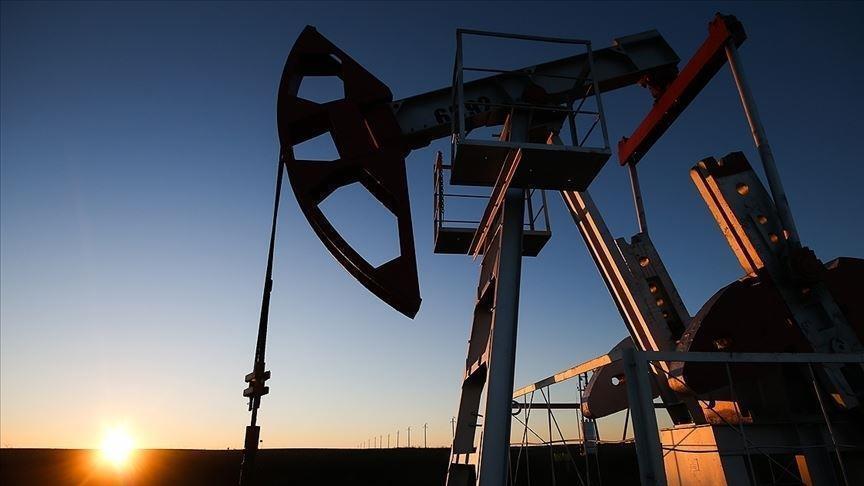The price of Brent crude oil fell by 7.3% on a weekly basis, marking its sharpest decline since October 2023, after the Organization of the Petroleum Exporting Countries (OPEC) revised its global oil demand forecast downward for three consecutive months.
The contraction in the real estate sector and housing market, which is one of the main factors negatively affecting China’s economic growth, has contributed to forecasts of decreased demand in the world’s largest oil importer.
This was reflected in OPEC’s September oil market report. The group stated on October 14 that it has revised its forecast for global oil demand down by 106,000 barrels per day (bpd) compared to its previous estimate, predicting that demand will increase by 1.93 million bpd this year compared to last year, reaching a total of 104.14 million barrels.
The report, which contains data suggesting that the slowdown in global oil demand will largely stem from China, indicated that the demand increase in China was 70,000 barrels lower than the forecasted increase in last month’s report, estimated at 580,000 bpd.
This situation strengthened market participants’ expectations of lower-than-expected growth in oil demand and caused the price of Brent crude oil to fall by 4%, finishing at $75.43 per barrel on the same day.
The International Energy Agency (IEA) published a similar outlook on October 15, forecasting global oil demand to rise by 862,000 bpd this year to around 102.84 million bpd, down from IEA’s previous report when the agency estimated an increase of 900,000 bpd.
Brent crude fell by 1.4% to $74.37 following the IEA’s lower global oil demand forecast.
Thus, Brent crude, which last closed at $80.80 on October 7 and failed to reach that level in the past nine sessions, ended the week on October 18 at $72.87. This represents a weekly decline of 7.3%, marking the largest drop since October of last year.
– ‘Chinese demand surge’ to influence oil prices
The economic developments around the world have played a key role in OPEC’s consecutive three-month downward revision of its global oil demand forecast, Fereydoun Barkeshli, the president of the Vienna Energy Research Group told Anadolu.
Pointing out that China has been the driving force behind global oil demand for the past 30 years, Barkeshli noted that the measures announced due to concerns about the country’s economy have raised expectations for economic growth in the third and fourth quarters of 2024, but have not led to a concrete increase in demand.
Barkeshli stated that economic developments in China have rapidly affected the ASEAN countries, adding that the drop in demand in China has also led to a decrease in oil demand among ASEAN nations.
‘Given the fact that global oil demand for 2025 is also reversed downward, we must therefore expect softer prices for next year. International oil markets will not see shining days without a meaningful Chinese demand surge,’ he said.
– Europe enters second half of year with ‘relatively full inventories’
Referencing the geopolitical factors, Barkeshli said Europe over-purchased fuels in 2023 and the first half of 2024 due to the Russia-Ukraine war and fear of energy security.
‘They entered the second half of the year with relatively full inventories,’ he added.
On the other hand, noting that in response to the attack on Israel, the US administration has imposed sanctions on Iran’s oil and petrochemical sectors and promised to strengthen existing sanctions, Barkeshli marked that the lack of seriousness with which market observers regard this decision has led to no triggering of demand increase.
On October 11, the US Department of the Treasury announced that it had increased financial pressure on Iran by limiting the country’s ability to generate energy revenue.
Barkeshli also highlighted that US President Joe Biden sees oil prices as a factor that could influence voters’ decisions, and therefore does not want to see upward pressure on prices before the elections.
He also stated that every current candidate will do their best to keep interest rates stable and fill tanks with local production.
– OPEC and IEA use ‘different methodologies and forecasting models’
Emphasizing that the differing demand forecasts released by OPEC and the IEA have been highlighted by various think tanks and media organizations, Barkeshli said that different methodologies and forecasting models are used in OPEC and IEA calculations.
‘OPEC is best in supply forecasts due to the fact that it has direct access to producers’ supply data. The difference between the two secretariats’ estimations has been noted in previous years too. This year data and figures were somewhat politicized,’ Barkeshli said.
There are several agencies, banks and private institutions that provide demand estimates, he said and added that each company publishes figures that are in line with its own or own client’s expectations and interests.
‘As such there is no doubt that there is sometimes a sense of direction and purpose in figures. To the best of my knowledge, China’s demand was the source of discrepancies in most demand analysis,’ he added.
– Oil market expected to end year with oversupply
Gaurav Sharma, an independent London-based oil market analyst, also stated that the easing of supply concerns has been significant in OPEC’s downward revision of its demand forecast.
Expressing that many people were skeptical about the possibility of an oversupply at the beginning of 2024, Sharma cited that it is now certain that the oil market will end 2024 with an oversupply and enter 2025 in the same manner.
‘As for Iran’s oil exports its flow of exports to China will likely continue. The question is, will China still continue buying the bulk of Iran’s 1.65 million bpd exports in 2025? Its own economic growth, or lack of it, may be the deciding factor,’ Sharma concluded.

